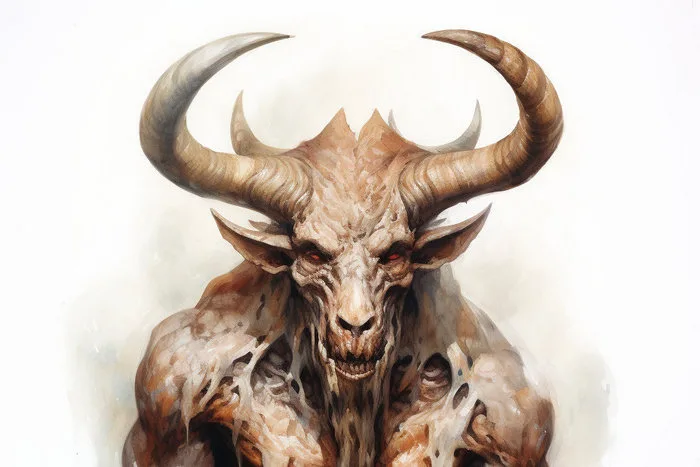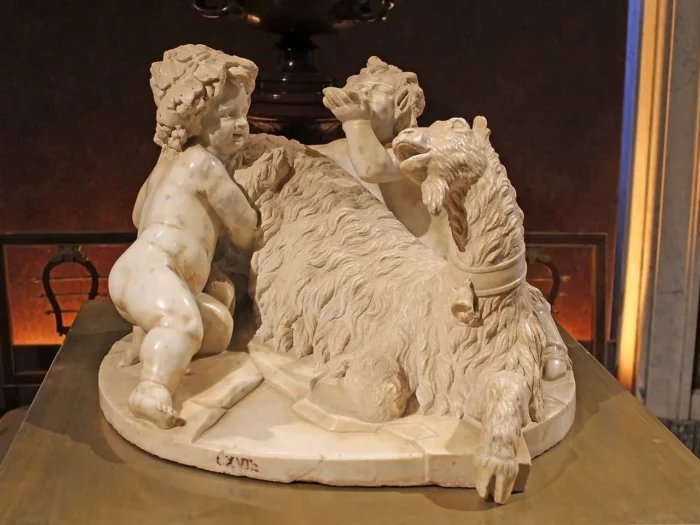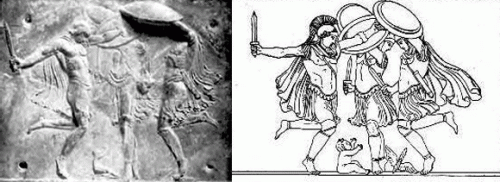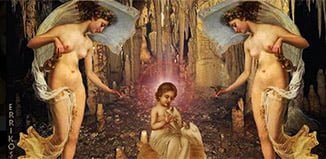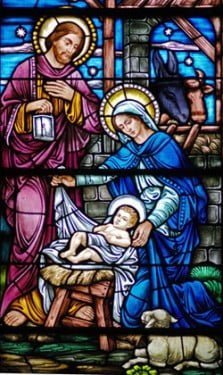The Labyrinth of Crete, the Myth of the Minotaur
Zeus and Europe
Zeus, in the form of a bull, brought Europe from the Phoenician seashore to Gortys in Crete where he made love with her under a plane tree (or on the plane tree after assuming the form of another sacred animal, the eagle), since then the plane tree was blessed to never lose its leaves (evergreen).
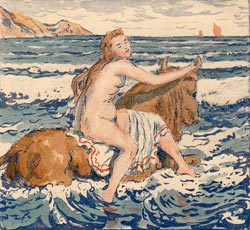
From their union three sons were born triplets (or two twins). Next, Zeus arranged the marriage of Europe to the Cretan King Asterion (or Asterio), who appointed Europe’s and Zeus’ sons as his successors.
- -> Read more about Gortys
- -> Read more about the Abduction of Europe by Zeus
As promised, the three sons of Europe and Zeus (Minos or Minoas, Radamanthys, Sarpidon) succeeded King Asterion to the throne of Crete. Initially they seemed satisfied to co-govern, but Minos, who wanted the reign to be his exclusively, ended up banishing his brothers: Radamanthys was sent to Viotia (or Cyclades) and Sarpidon to Asia Minor. Minos became the monarch who believed the gods would give him everything and anything he wished.
The gods loved Minos because his father, Zeus, honored him above all. They presented him with a wife, Pasiphae, daughter of Helios (Sun) and Persida, and sister of Circe, the sorceress, Kalypso and Aete, and aunt of Mideia, the grand sorceress. There is talk of eight children for Minos and Pasiphae: Androgeos, Katrefs, Defkalion, Glafkos, Akali (or Akakalis), Xenodiki, Ariadne and Phaedra.
The Myth Of The Minotaur
Once, wanting to offer a sacrifice in honor of his uncle Poseidon, Minos asked Poseidon to send the best bull he could find from the sea. The bull was so beautiful that Minos didn’t sacrifice him, but instead kept him with his flock (or in the palace gardens). To revenge Minos for not keeping his promise, Poseidon made the bull so ferocious and dangerous that his eventual capture in Crete became one of the twelve feats of Hercules (Cretan Bull).
When Pasiphae, his immortal wife, saw the bull she fell in love and coupled with him. She was able to couple with him with the help of Daedalus, who constructed a wooden likeness of a cow, in which Pasiphae hid. From this union the monster Minotaur was born, a humanoid being with a bull’s head, which Minos promptly jailed in the Labyrinth, an enormous construction in Knossos.
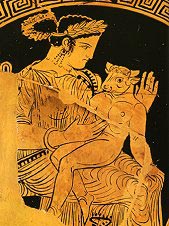
-> Read more about the Minoan Palace of Knossos
-> Read more about Daedalus
Theseus and Ariadne
King Minos, as ruler of Crete, the greatest naval kingdom of that time, undertook many journeys and military expeditions. His best known aggressive expedition was against Athens to avenge the murder of his first born son, Androgeos. When the siege of Athens continued for too long of a period, Minos asked his father, Zeus, for help, and Zeus unleashed a terrible epidemic. Following the instructions of the Oracle, the Athenians were forced to surrender and accept all of Minos’ terms of submission. The most onerous condition of the surrender was the blood tribute. This called for Athens to provide every year (or every three or nine years) seven young men and seven young women as food for the monster Minotaur for as long as he lived.
When the last group of young men and women arrived from Athens, prince Theseus, son of Poseidon and the successor of King Aegeas of Athens, was among them. The princess of Knossos, Ariadne, fell in love with the brave youth from Athens, and helped him escape. She devised a plan and gave Theseus a ball of yarn (mitos) so he could find his way through the Labyrinth and kill the monster Minotaur.
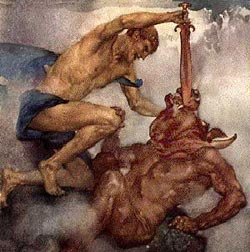
After the killing, Ariadne departed Crete together with Theseus. However, along the way Theseus deserted her. Eventually, Ariadne became the wife of the god Dionysos.
During Minos’ reigning years, Daedalus, from Athens , took up residence in Knossos, after he was exiled to Crete for committing a crime in his own country. In Crete he eventually became the official architect and sculptor for Minos. In Knossos he built the Palace, the Labyrinth, the wooden likeness of a cow for Pasiphae, and even helped Ariadne and Thiseas kill the horrible Minotaur.

However, when Minos became disillusioned with him, he jailed Daedalus together with his son, Icarus. The brilliant engineer didn’t stay long – he made a pair of wings for himself and Icarus and they flew away. The wings were made of feathers held together with wax. Daedalus warned his son not to fly too close to the sun, as it would melt his wings, and not too close to the sea, as it would dampen them and make it hard to fly.
They successfully flew from Crete, but Icarus grew exhilarated by the thrill of flying and began getting careless. Flying too close to the sun, the wax holding together his wings melted from the heat and he fell to his death, drowning in the sea. The Icarian Sea, where he fell, was named after him. Daedalus lamented his dead son and then continued to Sicily, where he came to stay at the court of Cocalus in a place called Camicus.
The Labyrinth of Crete
Of Daedalus’ many ingenious works, the most famous was the Labyrinth – the gigantic palace comprised of clusters of rooms and corridors so complex and convoluted that only Daedalus himself was able to find the way out again. It was in this Labyrinth that the Minotaur, the horrible creature who was the love-child of Pasiphae’s perverse affair with the bull from the sea – was kept.
NOTE. This story comes from the book “The Labyrinth of Messara” by Kaloust Paragamian and Antonis Vasilakis.
© explorecrete.com All Rights Reserved. Reproduction or copying without permission is prohibited.

